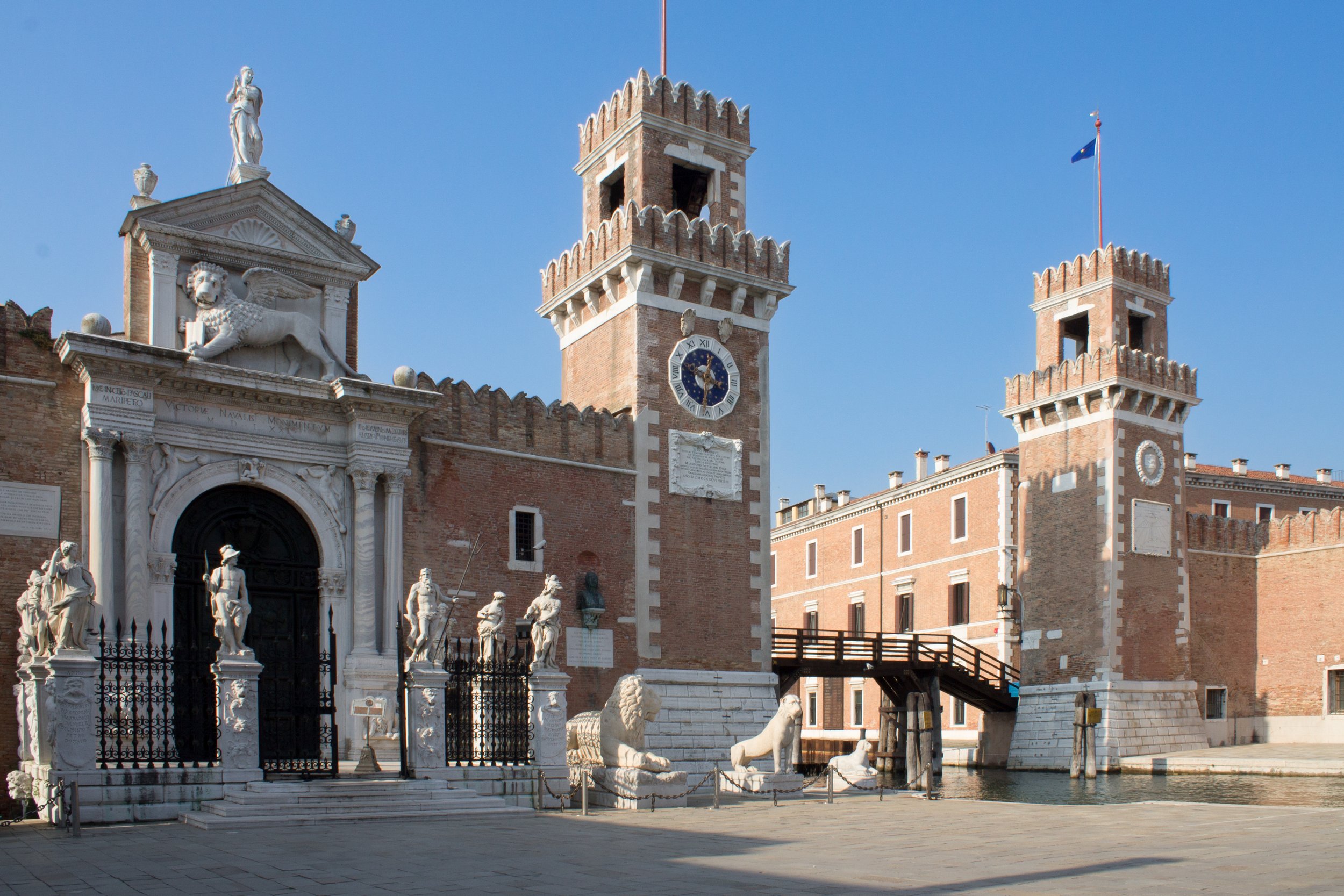Arsenale
Founded according to tradition in 1104, expanded over the centuries to occupy a large part of the northeastern area of the city, the Arsenal of Venice-the term is a corruption of the Arabic word darsina'a, house of industry, dockyard-was for centuries the largest in the world: more than 16,000 employees, at peak times when there were a hundred galleys in the dock ready for war.
On the surrounding wall, to the right of the portal, a bust depicting Dante Alighieri commemorates the poet's visit to Venice in 1321.
A visit to the Arsenal is certainly a great idea. We are sure your little ones will be thrilled by the experience!
It is located in the Castello district and represents the place behind whose crenellated walls the feverish activity of Venice's shipyards took place. Here skilled shipwrights built galleys, merchant ships and other vessels at a pace unparalleled in Europe.
The Arsenal workers were called "arsenaloti" and numbered in the thousands, each with his or her own specialty. They worked in veritable assembly lines.
THE HISTORY OF THE ARSENAL
Tradition has it being founded in 1104, but for some it dates back to the next century.
The entire complex revolves around the Old Arsenal, which includes the building where the Bucintoro, or the Doge's representative vessel, was kept.
As the needs of the Serenissima increased, the demand for ships also grew, so the Arsenal became larger and larger.
First the Corderie della Tana were built, built in 1303-1304 and then rebuilt by Antonio da Ponte in 1579-85. They occupied almost the entire southern part of the Arsenal.
Two more extensions were made in 1325 with the Arsenale Nuovo and in 1473 with the Arsenale Nuovissimo.
In addition, with the beginning of the productions of the Galeazze (warships larger than normal galleys), it was necessary to open workshops and warehouses, as well as the construction of the Galeazze Canal.
Because the activities of the shipyards were highly secret, the arsenal was surrounded by walls, separated from the rest of Venice by natural and artificial canals that embrace it from all parts of the complex. The only access from land is the large portal from 1460.
The production of the arsenal until the 18th century was unparalleled. In addition to its function as a shipyard it also had that of a naval base: in fact, it housed a fleet of 25 ships ready to sail when needed.
At the height of its activity the arsenal covered an area of 46 hectares, employed 16,000 men and housed 300 shipping companies.
Until the 16th century Venice maintained its naval power by means of rowing boats, often equipped with sails (galleys in battle were the most maneuverable). Beginning in the 17th century, however, Venetian ships were surpassed by Dutch and English sailing ships, whose construction Venice could never match.
During the decline of the Republic its inhabitants became increasingly land-bound. By 1797, at its fall, the shipyard's activities had ceased altogether.
The complex is now owned by the Navy, and much of the buildings are used as exhibition space.
Some spaces, long abandoned, have been redeveloped by the Biennale Committee. These spaces are the former Corderie, the former Artillery and several docks.
THE ENTRANCE PORTAL
Considered one of the earliest examples of Renaissance style in Venice, it dates back to 1460 and is flanked by two towers. The terrace enclosed by a gate, on the other hand, dates from 1692-94.
This is decorated with a series of marble lions of various shapes and sizes: the largest, in a seated position, was part of the spoils of war that Doge Francesco Morosini took from the port of Piraeus in Greece.
WHAT YOU CAN VISIT
The areas of the Arsenal that can be visited are the North Arsenal year-round ( Monday through Friday, 10 a.m. to 5 p.m.For tours or information on the portion of the Arsenal owned by the Navy, you can contact the Institute of Maritime Military Studies.
(www.difesa.it/Protocollo/AOO_Difesa/Marina/Pagine/MSTUDI.aspx ) and the South Arsenal during the openings of the Art and Architecture Biennales.
HOW TO GET TO THE ARSENAL
From Piazzale Roma and the Station to the Venice Biennale: get there by ACTV vaporetto lines. Line 6 is the fastest, but line 1 allows a full route of all stops along the Grand Canal.
About Venice
Palaces
Doge’s Palace - Palazzo Ducale
Islands and districts
Festival del Cinema di Venezia
Rialto Bridge - Ponte di Rialto
